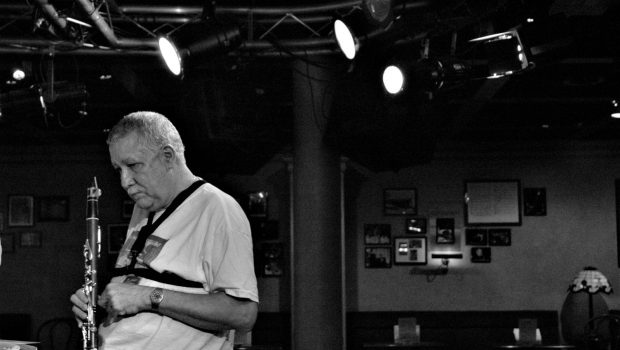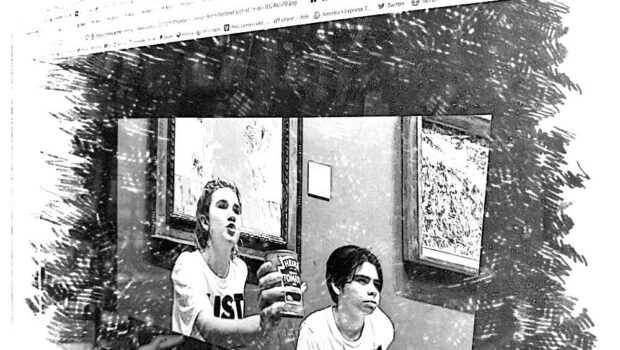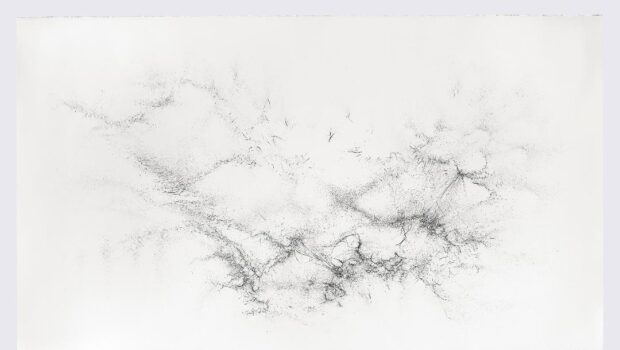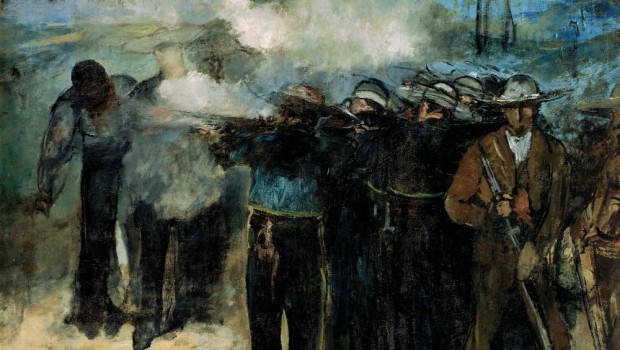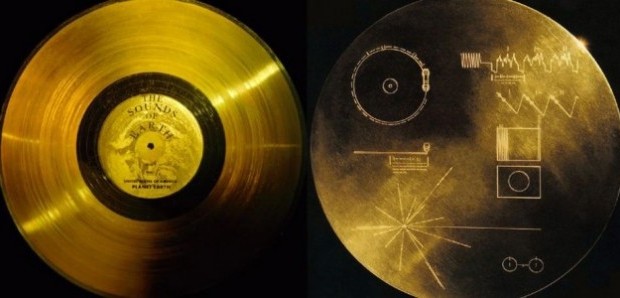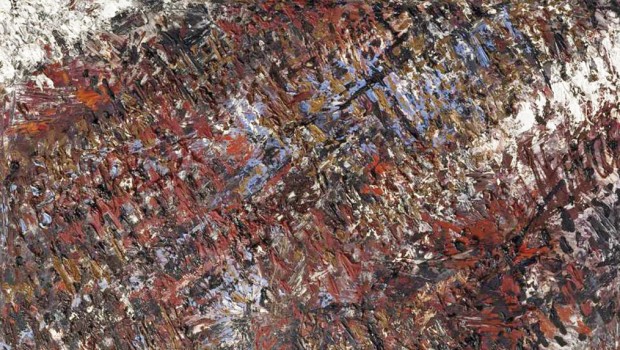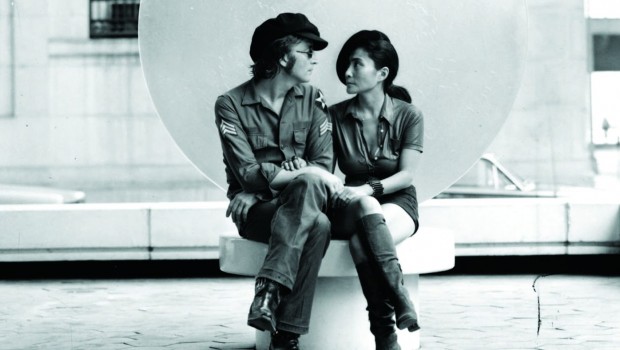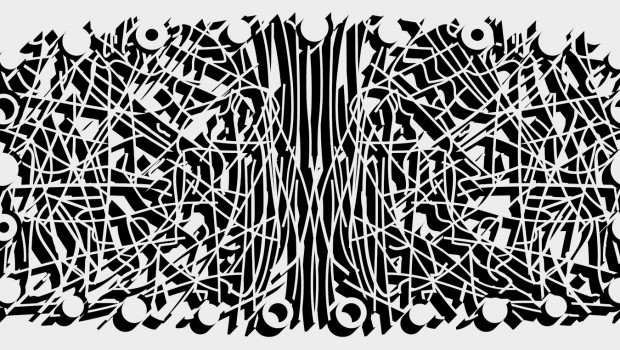Cosmopolitan Routes. Latin American Art in the 20th and 21st Century.
Arte latinoamericano de los siglos XX y XXI. Una conversación con Gilbert Vicario
Rose Mary Salum
Download Complete PDF / Descargar
The MFAH presents the first in a series of exhibitions celebrating the 10th anniversary of the establishment of the museum´s Latin American art department and International Center for the Arts of the Americas (ICAA). Cosmopolitan Routes: Houston Collects Latin American Art comprises more than 100 masterworks on loan from private holdings in Houston and Latin America, including paintings, works on paper, photography, sculpture, assemblage, installations, and video projections. Among the many artists represented are Antonio Berni, Gego, Frida Kahlo, Francisco Matto, Hélio Oiticica, Diego Rivera, Joaquín Torres-García and Liliana Porter.
Literal had a conversation with the curator Gilbert Vicario, also the appointed curator of the Des Moines Art Center in August 2009. He has directed an array of exhibitions: Chen Zhen: Inner Body Landscapes (2002), Made in Mexico (2004), and many others. Recent publications include Daniel Joseph Martinez: A Life of Disobedience (2009), with Hakim Bey, David Levi-Strauss and Arthur C. Danto.
* * *
Rose Mary Salum: You were commissioned to curate an unprecedented exhibition at the MFAH: Cosmopolitan Routes: Houston Collects Latin American Art. What is the purpose/nature of an exhibit like this one?
Gilbert Vicario: Two months after leaving the Museum of Fine Arts, Houston Mari Carmen Ramirez proposed the idea of me guest curating an exhibition that would celebrate the important role played by the Maecenas, the friends of the Latin American art department who have supported the institution over the last ten years. By highlighting the collecting activities of these individuals, the MFAH pays tribute to this collecting community, which now extends well beyond the geographic parameters of Houston into places such as Scottsdale, AZ, Carmel, CA, Chicago, IL, Miami, Fl, Buenos Aires, Argentina, Sao Paulo, Brazil, Madrid, Spain, to name a few. Because of this I decided to title the exhibition, Cosmopolitan Routes: Houston Collects Latin American Art, which privileges the fact that Latin American artists, like collectors, create work in Latin America, Europe, and the United States.
RMS: What is the main criterion when choosing the artists and why?
GV: The main criterion in selecting art and artists is quality and relevance. I had a great challenge ahead of me because there was so much good work out there. Our collectors have been doing an incredible job buying Latin American art and have bought work that not only reflects the exhibitions and programs of the MFAH, but they have also taken great risks in exploring particular areas, perhaps specific to a Latin American country, or have focused more on emerging artists, which has enabled them to create strong and uniquely singular collections. My challenge has been to present a broad yet historically accurate portrait of Latin American art in the 20th and 21st century. In other words, one that reaches back into early modernism, but that acknowledges what is happening at the present time. This is diffi cult to do given the impossibility of covering every movement or time period. The subjectivity of curating, however, allows me to place my own emphasis on certain areas while pulling away slightly from other areas. Ultimately, it was important to acknowledge what art already exists in the community and to construct an interesting narrative out of that. Of course, as a curator, I would like to have seen more examples of art from certain periods but that is ultimately a difficult thing to control. I think it is more important to see this type of exhibition as a thumbprint. One that asserts itself through a highly unique set of biometric characteristics, yet which also maintains a certain degree of relational familiarity with what is out in the world.
RMS: Could you elaborate on how the artists chosen became a part of this exhibit?
GV: Cosmopolitan Routes grew out of an intensive series of collection visits that were coordinated by Elizabeth Cerejido, assistant curator of Latin American art at the MFAH. During the course of three months we visited with collectors, took pictures, made notes and began to organize piles and piles of materials. This type of field research was critical in establishing a foundation upon which to work on. It was also exciting to see how collectors choose to live with work, and it really gave us great insight into the profound level of intellectual curiosity and substance found in Houston. Like any type of field research or exercise in social anthropology, which I minored in college, patterns of consumption and behavior dictated the types of work collected. Great attention has been placed on watershed exhibitions like Inverted Utopias, which forever changed the perceptions of Latin American art, and collectors have been actively in pursuit of masterpieces by School of South artists such as Joaquin Torres García, Julio Alpuy, Gonzalo Fonseca, and Francisco Matto. Helio Oiticica, an artist who was almost unheard of when Mari Carmen Ramírez organized his exhibition in 2006—and whose name people still find difficult to pronounce—was immediately embraced by the collecting community, who knew they would be ahead of the curve. Important work by early modernists such as a cubist painting by Diego Rivera, or the Argentinean Emilio Pettoruti, are fundamental to the scope of the exhibition and fortunately were available, along with one of the best paintings by Frida Kahlo. It was also extremely important to include contemporary artists because of the simple fact that the field of Latin American art is not just an exercise in archaeology, but in fact a practice whose relevance continues to shape and critique the way we view contemporary culture.
RMS: Could you talk about the influences that the artists exhibited have had?
GV: Well, as I alluded to earlier, none of these artists, whether early modernist or contemporary, work in a bubble. All of these artists have been engaged with the world around them and have actively sought to connect with artists working in other parts of the world. Most of the early modernists were intimately aware of the artistic movements unfolding in Europe and were in fact students in Madrid, Paris, and other centers of artistic discourse at the time. Travel has always been an important component of an artist’s education, and many have spent significant time in Europe and the United States. It is also important to note that Latin American has also been shaped to a certain extent by foreign artists who took up residence in Latin American countries such as Mexico, Brazil, Chile, and Argentina, to name a few. Many of them contributed significantly to the development of modernism in these respective countries. I’m thinking of Matthias Goeritz in Mexico, Gego in Venezuela, or Samson Flexor in Brazil, to name a few. You could say that synthetic cubism played a signifi cant role for many artists, such as the work of Georges Braque and Juan Gris. European constructivism, the work of Kazimir Malévich, Piet Mondrian and others had a profound effect on South American abstraction. While in contemporary art many factors have infl uenced artists, including the history of conceptual art, psychoanalysis, philosophy, history and literary criticism. These have all played a role in shaping a global conversation between artists both in and out of Latin America.
RMS: How do these kinds of activities enrich the art world?
GV: I believe in the interconnectedness of our lives and our culture, and nobody exists in a one-dimensional sphere. I think there is still a little hesitation in approaching Latin America because it seems that it is something that lives in the past as a monolithic construction. In recent years, more attention has been placed in the emerging art coming out of countries in Asia, due in part to market speculations and because of recent political events that have enabled greater communication within the language of art. Latin America art stands out as a singular case study of modernism though, with the longest and most complex history of European colonialism, continuously evolving, changing, and growing. We know more of the art produced by Latin Americans in the last 10 years than we ever have, and Houston has played a leading role in making this happen.
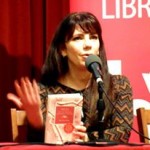 Rose Mary Salum is the founder and director of Literal, Latin American Voices. She´s the author of Delta de las arenas, cuentos árabes, cuentos judíos (Literal Publishing, 2013) among other titles.
Rose Mary Salum is the founder and director of Literal, Latin American Voices. She´s the author of Delta de las arenas, cuentos árabes, cuentos judíos (Literal Publishing, 2013) among other titles.
El MFAH presenta la primera exhibición de una serie que celebra el décimo aniversario del departamento de Arte Latinoamericano en el MFAH y del Centro internacional del Arte de las Américas. Cosmopolitan Routes: Houston Collects Latin American Art comprende más de 100 obras maestras provenientes de colecciones privadas de Houston y América Latina. La exhibición incluye pintura, trabajos en papel, fotografía, escultura, ensamblajes, instalaciones y video. Entre los artistas representados están Berni, Gego, Frida Kahlo, Francisco Matto, Hélio Oiticica, Diego Rivera, Joaquín Torres-García y Liliana Porter.
Literal tuvo una conversación con el comisionado Gilbert Vicario y actual curador del Centro de Arte Des Moines (2009). Vicario ha dirigido una diversidad de exhibiciones como Chen Zhen: Inner Body Landscapes (2002) y Made in Mexico (2004), entre otras. Sus publicaciones más recientes incluyen Daniel Joseph Martinez: A Life of Disobedience (2009), con Hakim Bey, David Levi-Strauss y Arthur C. Danto.
* * *
Rose Mary Salum: Usted es el curador de una exposición sin precedentes en el MFAH: Cosmopolitan Routes: Houston Collects Latin American Art. ¿Cuál es la finalidad y la naturaleza de una exposición como ésta?
Gilbert Vicario: Dos meses después de abandonar el Museo de Bellas Artes de Houston, Mari Carmen Ramírez propuso la idea de que fuera yo el comisionado de una exposición que celebra el importantísimo papel desempeñado por los mecenas, amigos del departamento de Arte Latinoamericano que han apoyado a la institución en los últimos diez años. Al destacar su tarea, el MFAH rinde homenaje a la comunidad propiciada por una colección que ahora se extiende mucho más allá de los límites geográficos de Houston, hasta lugares como Scottsdale, AZ, Carmel, California, Chicago, IL, Miami, Florida, Buenos Aires , Argentina, Sao Paulo, Brasil, Madrid, España, por nombrar sólo algunos. Basado en esto decidí el título de la exposición: Cosmopolitan Routes: Houston Collects Latin American Art, que privilegia el hecho de que los artistas latinoamericanos, tanto como sus coleccionistas, realizan su trabajo en América Latina, Europa o los Estados Unidos.
RMS: ¿Cuál fue el principal criterio para elegir a los artistas?
GV: El criterio de la selección de obras y de artistas fue la calidad y relevancia. Me enfrenté a un gran reto porque no había muy buen trabajo fuera de aquí. Nuestros coleccionistas han estado realizando una labor increíble y han comprado trabajos que no sólo se refl ejan en las exposiciones y los programas del MFAH, también han asumido grandes riesgos en la exploración de áreas específicas (tal vez en un país de América Latina) o han puesto una mayor atención en los artistas emergentes, lo que les ha permitido crear una sólida y singular colección. Mi reto ha sido así ofrecer un amplio retrato, históricamente exacto, del arte latinoamericano en los siglos veinte y veintiuno. En otras palabras, una muestra que se remonta no únicamente a los inicios de la modernidad sino que reconoce lo que está sucediendo actualmente. Esto es difícil, ante todo por la imposibilidad de cubrir cada movimiento o periodo de tiempo. La subjetividad de la curaduría, sin embargo, me permitió poner mi propio énfasis en ciertas áreas al tiempo que marcaba distancia de otras. Después de todo es importante reconocer lo que ya existe en la comunidad y construir un relato interesante a partir de eso. Por supuesto, como curador, me hubiera gustado haber visto más ejemplos del arte de ciertos periodos, aunque eso no estuvo en nuestras manos. En este sentido, quizá es importante observar este tipo de exposición como una huella digital. Algo que se impone a través de un conjunto muy particular de características biométricas, pero que mantiene también un vínculo con lo que está allá fuera.
RMS: ¿Podría explicarnos de qué forma los artistas seleccionados se convirtieron en parte de esta exposición?
GV: Cosmopolitan Routes surgió de una serie intensa de visitas a colecciones coordinadas por Elizabeth Cerejido, curador asistente de arte latinoamericano en el MFAH. Durante tres meses visitamos a coleccionistas, se tomaron fotos y notas, y se comenzaron a organizar montones y montones de material. La investigación de campo fue fundamental en el establecimiento de una base sobre la cual trabajar. También fue emocionante ver como los coleccionistas han vivido para esta labor, lo que nos dio una idea clara del nivel de la curiosidad intelectual y entusiasmo que uno encuentra en Houston. Al igual que cualquier tipo de investigación de campo o ejercicio de antropología social, mi especialidad, los patrones de consumo y comportamiento determinan los tipos de trabajos recogidos. En este sentido, se puso una particular atención a las exposiciones que han constituido un parteaguas, como Inverted Utopias, aquellas que cambiaron para siempre la percepción del arte latinoamericano. Así, los coleccionistas han estado a la búsqueda de obras maestras de artistas del Cono Sur, como Joaquín Torres- García, Julio Alpuy, Gonzalo Fonseca o Francisco Matto. Helio Oiticica, un artista casi desconocido cuando Mari Carmen Ramírez le organizó una exposición en 2006 (y cuyo nombre la gente todavía encuentra difícil de pronunciar) fue acogido de inmediato por la comunidad de los coleccionistas, quienes sabían que su obra iba a estar a la cabeza. La importante labor de los modernistas tempranos, como la pintura cubista de Diego Rivera o el trabajo del argentino Emilio Pettoruti, fueron fundamentales para los objetivos de la exposición que, afortunadamente, disponía del material respectivo junto con una de las mejores pinturas de Frida Kahlo. Fue muy importante también la participación de artistas actuales por el simple hecho de que el campo del arte latinoamericano no es un ejercicio de arqueología, aunque este enfoque es el que, en la práctica, sigue dando forma a la crítica y al modo de ver la cultura contemporánea.
RMS: ¿Podría hablarnos un poco de la influencia que los artistas expuestos han tenido?
GV: Según hemos dicho antes, ninguno de estos artistas –ya sean los primeros modernos o los artistas contemporáneos– trabajaron en una burbuja. Todos estaban comprometidos con el mundo de su alrededor y han buscado siempre entrar en contacto con los artistas que trabajan en otras partes del mundo. La mayor parte de los primeros modernos, por ejemplo, estaban íntimamente conscientes de los movimientos artísticos que se desarrollaban en Europa e, incluso, muchos estudiaron en Madrid, París y otros centros artísticos de la época. Los viajes siempre ha sido un componente importante de la educación de un artista y un buen número de estos ha pasado mucho tiempo en Europa y los Estados Unidos. Por otro lado, es importante recordar que América Latina ha sido formada hasta cierto punto por los artistas extranjeros que se establecieron en lugares como México, Brasil, Chile y Argentina, sólo por mencionar algunos. Muchos de ellos han contribuido significativamente al desarrollo del arte moderno en estos países. Estoy pensando en Matías Goeritz en México, Gego en Venezuela o Flexor Samson en Brasil, por ejemplo. Se podría decir asimismo que el cubismo sintético (como la obra de Georges Braque y Juan Gris) ha desempeñado un papel importante para muchos artistas. De igual manera, el constructivismo europeo (la obra de Kazimir Malevich, Piet Mondrian y otros) tuvo un efecto profundo sobre la abstracción sudamericana. Si bien en el arte contemporáneo son muchos los factores que han influido en los artistas –incluida la historia del arte conceptual–, el psicoanálisis, la filosofía, la historia y la crítica literaria han desempeñado un papel determinante en la conformación de una conversación global dentro y fuera de América Latina.
RMS: ¿Y cómo es que este tipo de actividades enriquecen al mundo del arte?
GV: Creo en la interconexión de nuestras vidas y nuestra cultura ya que nadie existe en una esfera de una sola dimensión. Sin embargo, todavía hay cierta vacilación al acercarse a América Latina porque parece algo atado al pasado, como una construcción monolítica. Recientemente se ha dado una mayor atención al arte emergente que sale de los países de Asia, debido en parte a las especulaciones del mercado y también a los acontecimientos políticos que han propiciado una mayor comunicación dentro del lenguaje del arte. El arte latinoamericano se destaca como un caso singular de la modernidad –con su larga y compleja historia del colonialismo europeo–, en continua evolución, cambio y crecimiento. Hoy sabemos más del arte producido por los latinoamericanos en los últimos 10 años y Houston ha jugado un papel importante al permitir que esto suceda.
 Rose Mary Salum es la fundadora y directora de Literal, Latin American Voices. Es la autora de El agua que mece el silencio (Vaso Roto 2015) y Delta de las arenas, cuentos árabes, cuentos judíos (Literal Publishing 2013) entre otros. Su twitter @rosemarysalum
Rose Mary Salum es la fundadora y directora de Literal, Latin American Voices. Es la autora de El agua que mece el silencio (Vaso Roto 2015) y Delta de las arenas, cuentos árabes, cuentos judíos (Literal Publishing 2013) entre otros. Su twitter @rosemarysalum
©Literal Publishing



